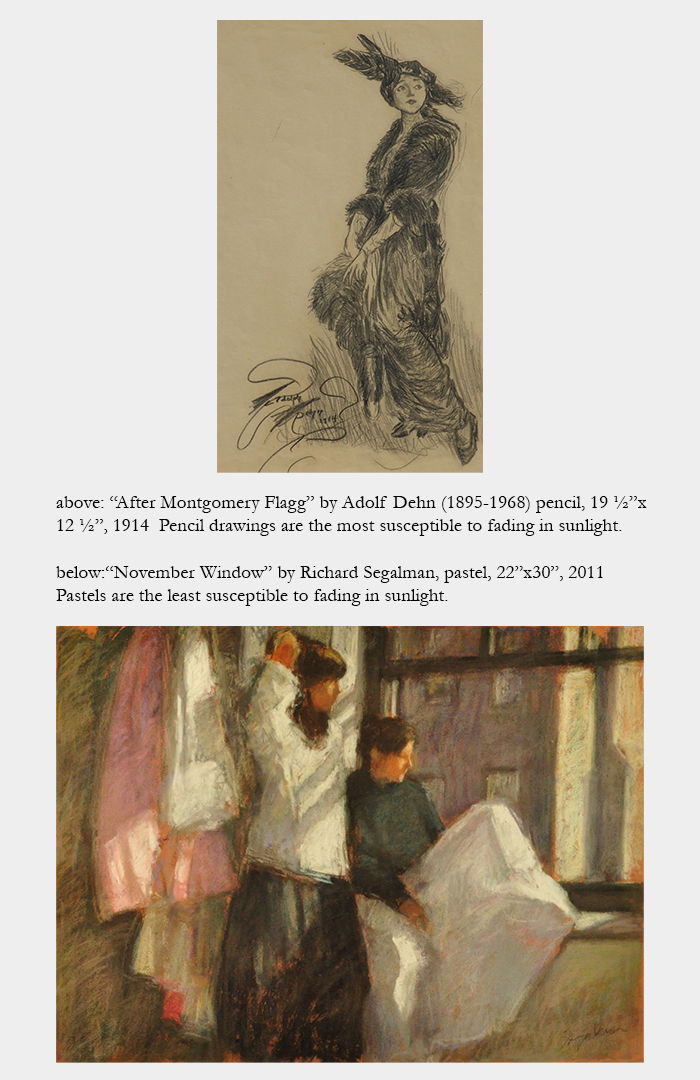|
The Effect of Sunlight on Paintings
Dear Artsperts:
We love living in Florida and we have a wonderful condo on the beach with windows that look out to water. We have a wall with a few paintings that face those windows. Should we worry about the sunlight damaging the paintings?
Sunny
Dear Sunny,
The answer depends on the type of medium used to create the work, which can be quite varied. The least susceptible medium is pastel and the most is pencil drawings. However, even with the most susceptible works, there are mitigating steps you can take to protect works in your collection from fading in the sunlight.
Pastel is the purest form of paint, down to the elements of color in pure pigments. It is often confused with chalk because it comes in stick form. The two are entirely different. Chalk is ground limestone with color added to it and is meant to be temporary and washed away. Pastel on the other hand lasts indefinitely. It will never crack or fade because of its nature as pure pigment. However, the paper does need to be protected and as such these works are always protected from the elements behind glass. The only issue with glass and sunlight is that it is highly reflective. We recommend Optium Acrylic Galzing by TruVue as an alternative, which is anti-reflective. It is also anti-static so it can be used to protect pastel works on paper.
Oils, acrylics, caseins, and egg tempera are the next least susceptible to sunlight. Oil paintings can experience craquelure over time (many decades) which are fine cracks in the painting. This is not from sunlight, but rather abrupt changes in temperature and humidity. The canvas will contract and expand with these changes. The paint itself is not as flexible and cracks may appear over time. This is normal for many paintings and will require professional conservation to correct. To help prevent this from happening, we recommend that you run your air conditioning, especially on particularly hot and humid days.
If you have a work painted with egg tempera, you may notice a fuzz appear over time. Again, this is not caused from sunlight but rather the conditions in the air and is normal. Because of the nature of egg tempera, it cannot be varnished for at least two years after it is completed. Often works are sold before they can be varnished. The "fuzz" can easily be wiped away with cheese cloth without damaging the painting. If the work is older than 2 years, we recommend contacting the gallery who sold it or a framer to have the work professionally varnished.
The works that are the most susceptible to fading in sunlight are watercolors and drawings. These works must be framed using UV Plexiglas. Another option is Optium Acrylic which also provides UV protection, with the added benefit of anti-reflective and scratch-proof. Never use Windex to clean these products as the ammonia will damage the surface. We recommend using a microfiber cloth as needed. If it is a highly valuable work, even with UV protective Plexiglas or Optium, it is still best to save these works for other areas of your home, away from direct sunlight.
We hope this puts your mind at ease so you can enjoy both the setting sun and your artwork!
Sincerely,
The Artsperts
|


